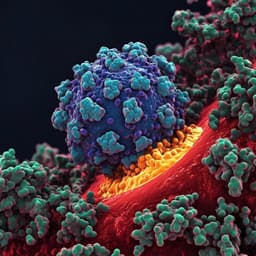
Chemistry
Biosensing strategies for the detection of SARS-CoV-2 nucleic acids
A. Tamborelli, M. L. Mujica, et al.
Discover how a collaborative research team, including Alejandro Tamborelli and Michael López Mujica, is revolutionizing decentralized SARS-CoV-2 detection with innovative biosensors designed for rapid and accurate RNA identification. This review delves into the cutting-edge technologies shaping our response to the COVID-19 pandemic.
~3 min • Beginner • English
Related Publications
Explore these studies to deepen your understanding of the subject.







